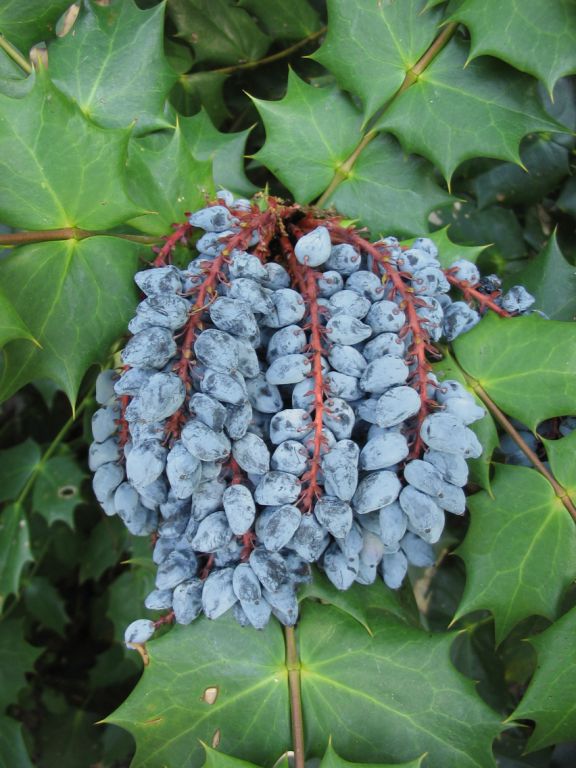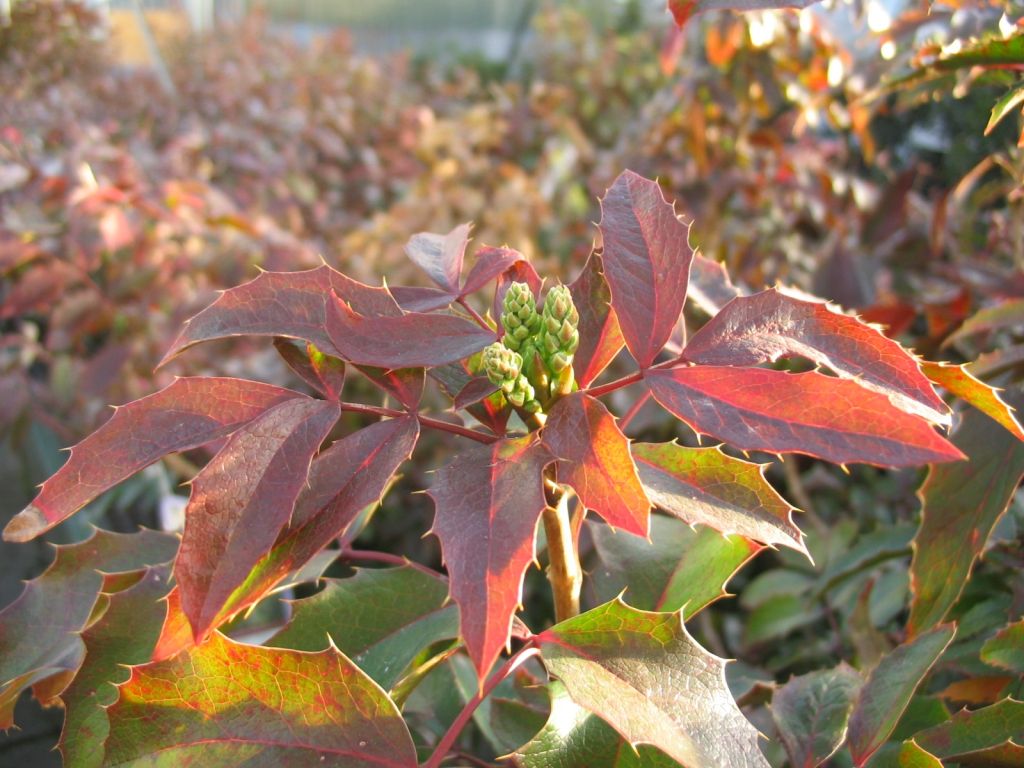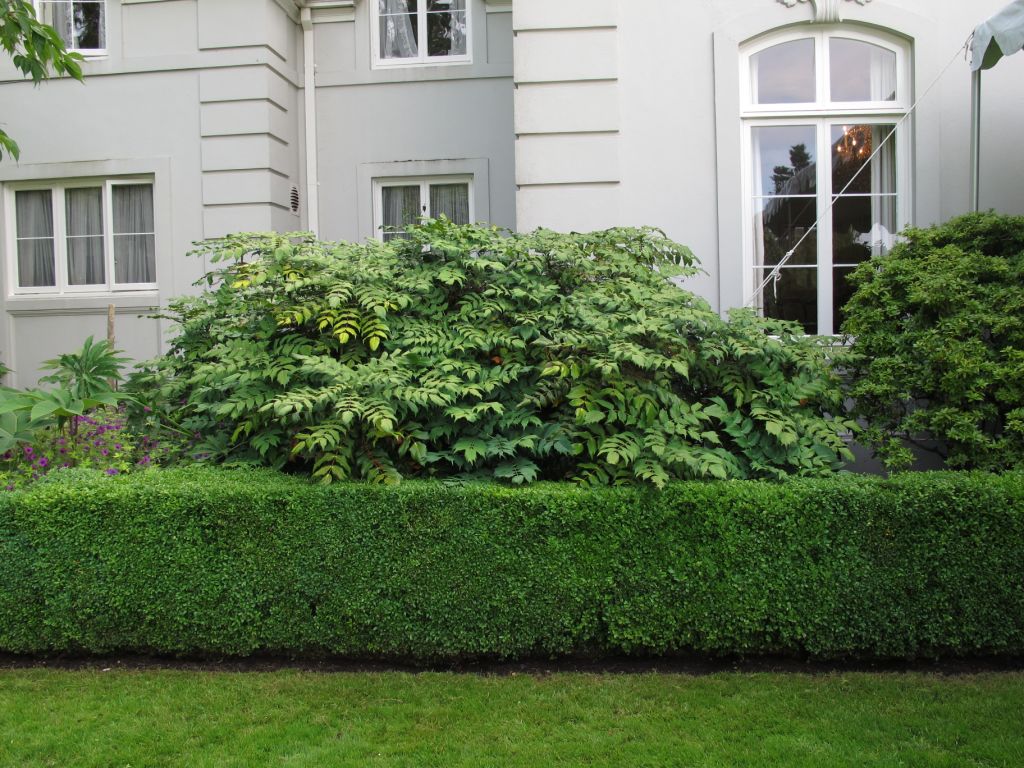Grape-Holly/Mahonia
 |
 |
Named for its holly-like foliage and grape-like fruit (well, they don’t look like grapes to me), these evergreens are another of my favorite shade shrubs. As durable as their relatives Nandina and Barberry, they are very adaptable and easy to care for. Deer avoid them due to the leaf prickles, which would certainly make them good candidates for security barriers too. The Asian type, Leatherleaf Mahonia, hurts more (due to its stiffer leaves) than the west-coast native Oregon Grape-holly, so take that into account if you’re going to have to brush past it on a pathway around the house.
I have a Japanese Mahonia in my yard (it’s essentially identical to Leatherleaf), and I have all but ignored it in the past fifteen years and it’s still thriving. All they ask is part shade to full shade with decent drainage and room to grow (like Nandina, they don’t prune well) and you can essentially leave them alone after they get established. Like any evergreen, a few older leaves are still shed from time to time, and these will turn a brilliant orange or scarlet. In summer, Mahonias have a nice matte green or bluish leaf, and the new leaves on the native species emerge coppery-orange or rose. Flowers are clusters on the tops of the stems in late winter or early spring; they are pastel yellow and nicely fragrant. If pollinated, they turn into plump powdery-blue berries on reddish stems; I don’t think they are edible, but the birds will enjoy them without making a mess. Occasionally I see a wayward seedling germinate here at the nursery, but they do not seem to be invasive in our area; my plant has remained childless its entire life.

I like to combine Mahonia with other evergreens for winter textural interest and a few deciduous plants for color contrast. Mine is in front of a Pawpaw tree, and the view of big, drooping yellow leaves behind the Mahonia’s tiered, stiff bluer leaves is a wonderful mix. As with Nandina, these can be leafless on their bottom foot or so of stem when they are mature, so consider planting a short shrub or perennial at their feet. I’ve used the native evergreen Leucothoe in front and I can’t see any Mahonia stems at all. Ferns would make a nice companion planting, or consider Brunnera, Heuchera or Hakone Grass for a nice foliar mix.
by Miri Talabac, Behnke’s Woody Plants Buyer

I was advised not to plant bushes too close to a houses’ foundation as this
encourages insects, spiders and mice to enter.